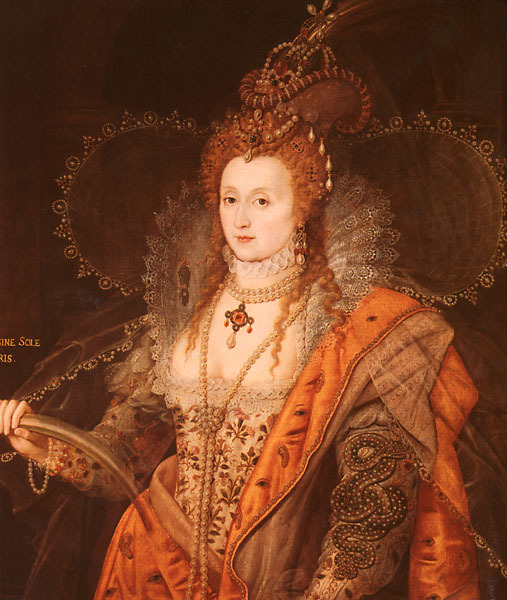Queen Elizabeth I
Hello everyone! I'll be talking a bit about the original Queen Elizabeth, I hope you like the blog.
 |
| Rainbow portrait of Queen Elizabeth I 1600, Hartfield House |
The portrait that I chose is known as the Rainbow Portrait of Elizabeth I, and it was painted in 1600. The painter is known by Marcus Gheeraerts the Younger(1561-1636), as a famous painter that has done more portraits of her, though I'm going to focus on this one. It is at the Hatfield House in Hertfordshire. In the article, there's an interesting little fact about this painting "Elizabeth's dress is covered in human eyes, ears, and lips, which have been interpreted as a reference to Elizabeth's secret service headed by Sir Francis Walsingham"(Eales, page 38). Not only did I not know this fact, but I didn't notice seeing them on the painting until I read this sentence in the article. I think it's fascinating, considering how a small detail in a painting is meant to symbolize so much more.
The below Youtube video goes into more depth about all the little details in the painting and their meaning. It's very intriguing!
Lucy Worsley on the "Rainbow" portrait
I chose Queen Elizabeth I because while reading Hamlet, there is a big focus on Elizabethan literature, and the class I'm taking is very linked with that sort of theme, so I figured I should learn more about her. The more I learned, the more I became curious about this iconic female ruler. I chose this specific portrait because as I read about it in the article, it sounded very grand, and it was. It's also, beautiful, and it captures the essence of Elizabeth the Queen of England. Though there isn't much connection between this and my class theme "How technology affects art" I still think that the way her literal power with the secret service manifested in this painting and caused it to get famous is very thought-provoking.
I will end this article with a final inspiring thought for all the female readers. Eales goes into detail about the many hardships Elizabeth faced for being a woman in the position she held, he exclaims "An underlying theme of such outbursts was the belief that, as a woman, Elizabeth would be unable to control her male courtiers: she was their plaything and pawn"(Eales, page 38). Still, I believe that the kind of achievements she made was unprecedented, as she made England much better than her male predecessors. As a female going into Architecture, a male lead field, I always get told that I will be overshadowed, but I won't let such ideas get to me, and neither should you! After all, look at her example!
WORK CITED
Eales, Jackie. “Polychronicon: Interpreting Elizabeth I.” Teaching History, no. 154, Historical Association, 2014, pp. 38–39, http://www.jstor.org/stable/43260794.
Morrill, John S. "Elizabeth I, Queen of England" Britannica, Feb 1st, 2007.
Whitehall Moll History Clips, "Lucy Worsley on the "Rainbow" portrait",
Youtube video, May 28th, 2019